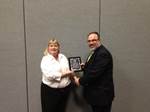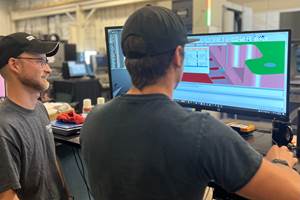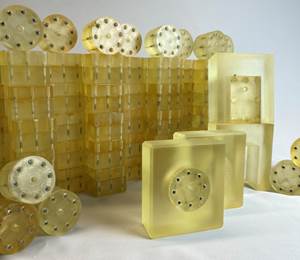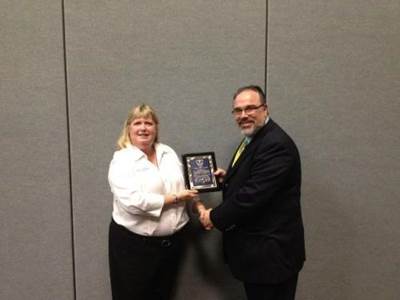SPE’s Moldmaking & Mold Design Div: Promoting and Educating the Industry
The Society of Plastics Engineers’ (SPE) Moldmaking & Mold Design Division (Newtown, CT) was formed in the mid-1970s.
The Society of Plastics Engineers’ (SPE) Moldmaking & Mold Design Division (Newtown, CT) was formed in the mid-1970s when a small group of dedicated industry leaders met to discuss what could be done to provide skilled toolmakers what they believed was necessary to ensure the continued growth of the moldmaking industry and address the needs of the individual moldmaker.
According to long-time member Glenn Beall of Glenn Beall Plastics (Libertyville, IL), the group decided that there were a number of reliable trade associations to represent the interests of shop owners. However, there was no organization that addressed the educational needs of individual moldmakers. “The original study group was well aware of SPE’s strong orientation toward continuing education,” Beall recalls. “After much discussion, it was decided that this activity should remain a part of SPE. The newly invigorated group remained as a subdivision of the Injection & Rotational Molding Division, which had been established in 1969. The group was then known as the Moldmakers & Designers Subdivision.”
In those early days, the group devoted itself solely to the recruitment and training of the future moldmakers and mold designers of the United States. To that end, it established—and still maintains—relationships with AMBA, SPI, NTMA and TMA. By 1978, the Moldmakers & Designers Subdivision became a full, independent and chartered division of the Society of Plastics Engineers; and its name changed to the Moldmaking & Mold Design Division.
The Division soon became known for providing a forum for the exchange of technical information among moldmakers. Still, some members believed more could be done to educate and train future moldmakers. Beall notes that funding was a challenge, in addition to lack of knowledge about how exactly to provide this education.
A solution to this challenge came in the form of the I.T. Quarnstrom Foundation—created through a grant from long-time SPE supporter DME (Madison Heights, MI), a manufacturer and distributor of hot runner systems, mold tooling, mold components and electronic controls. The Foundation’s mission was to support and further the education of mold designers and moldmakers. Today, the Foundation carries out the Division’s various educational and fundraising activities, which frees up the Division’s Board of Directors to plan and execute the Division's extensive conference programs and day-to-day administration.
Current Challenges
Today, the Division’s membership is just under 1000. “With the seemingly unstoppable offshoring of mold design and build during the 90s and into 2000s, the number of mold building companies in the U.S. and across North America saw rapid decline in business and in the numbers of firms,” notes Scott Peters, Division Chair, who is also the Operations Manager for a Multi-National Injection Molding and Assembly Manufacturer in Mainland China. “Thus our membership in the same regions saw similar decline. However, we have seen a slight resurgence of membership in the past two years.”
Peters points out that it has also been challenging to show “value” to its members. “It is difficult to attract new constituents when they do not perceive any real value,” he states. “Our sponsors for the newsletter and our division board have seen similar decline as the industry on the North American continent has been waning. Just as an example of the decline in interest from the membership, many of our sitting board members are on their second, third or fourth time around. Both Peters and Hertlein have served the division through all chairs and are on their second terms as senior division leaders. This is an issue as our membership believes we are a U.S.-based—and thus—U.S.-focused organization. While the majority of the members do come from the U.S., we do have an international flavor. In 2011 we awarded the Moldmaker of the Year for our division to SY Chu of Zhongshan Pacific Master Precision Injection Ltd. in Guangdong, China. Today we see more interest from the Asia/Pacific Rim companies than we do from our U.S. membership. There is a hunger for information in these regions and a desire to improve the status quo.”
To that end, the Division is working with social networking sites to gather information from moldmakers, mold designers and technology suppliers around the globe in an effort to re-create the real and perceived market value for the Division’s membership, Peters says. “We have to find a way to harness the methodology for information exchange and bring it to market in a way that is timely, appealing and keeps pace with the rapid changes in industry.”
Past Division Chair Wayne Hertlein, who is an Aerospace/Defense Application Engineer for Saline, MI-based MMI Engineered Solutions, lists the following as major goals:
• Increase membership in the Division by 5 percent each year;
• Provide technical papers for its Annual Technical Conference (ANTEC) yearly on new and innovative materials, processes, software and techniques for the industry;
• Support technical training at the local, national and international level at high schools, technical colleges and universities;
• Support the local SPE Sections with speakers and conferences on the topics of moldmaking and mold design;
• Provide to the membership a quarterly newsletter of interesting articles and updates on the Division;
• Provide technical seminars and mini-techs on moldmaking on the latest innovations, techniques and software;
• Sponsor and administer the yearly Moldmaker and Mold Designer of the year awards to both national and international members of the industry;
• Provide a hotline for Division members for questions they might have;
• Work with other societies and groups on moldmaking topics to help foster better industry development and strength;
• Work with companies to provide and donate materials, molds, components, etc. to schools, colleges and universities;
• Sponsor deserving applications for Honored Service Members and Fellow of the Society recognition from SPE;
• Provide new and innovative webinars and technical dinner meetings with its membership;
• Provide networking opportunities for members to interact and interface with each other;
• Encourage fundraising for the growth and education in training of new moldmakers and mold designers through the efforts of the IT Quarnstrom Foundation;
• Continue to document the history of the Division on the development and evolution of the industry.
The Division will also continue its quest to find ways to involve new and emerging markets, Peters adds. “Today, China is a hot-bed of activity for the Division,” he says. “Tomorrow, India? The next, Africa? And so on. If we do not gain membership in these regions and others by delivering a valuable product, we will slowly cease to exist. As a leader in the Moldmaking and Mold Design Division—and in this industry—I cannot sit idly by and allow that to happen!”
For More Information:
SPE / (203) 775-0471
info@4spe.org / 4spe.org
Moldmaking/Mold Design Division Hotline / (270) 215-1503
spemmmd@gmail.com
Related Content
Integrated CAD/CAM Streamlines Electrode Manufacture, Improves Quality
A focus on electrode design and automation helps toolroom improve efficiency, reduce tooling costs and deliver higher quality products.
Read MoreCAD/CAM Software Reduces Delivery Times by 70% With a Six-Month ROI
Single integrated CAD/CAM package reduces translation errors, simplifies design process, improves shop efficiency and shortens tool lead times.
Read MoreFive-Axis Vertical Mill Increases Mold Shop Capacity by Reducing Setups
Zero Tolerance now processes blocks — from squaring to waterline drilling to rough and finish milling — on a single five-axis CNC mill, reducing setups and moving blocks in/out of multiple machines without sacrificing accuracy and surface finish.
Read MoreIn "Hybrid" FIM Process, 3D Printing Complements Injection Molding
Alpine Advanced Materials used a desktop 3D printer and the freeform injection molding process to reduce prototype tooling production time and cost for its customers.
Read MoreRead Next
2012 Moldmaker and Mold Designer of the Year Announced
The Mold Making Division of The Society of Plastics Engineers (SPE) presented the Mold Maker of the Year to Robert Novak—a teacher at Waukesha County Technical College—and Mold Designer of the Year to Barbara Arnold-Feret--a life-long veteran of the plastics industry, currently a consultant with PARTS Ltd. in Texas.
Read MoreHow to Use Continuing Education to Remain Competitive in Moldmaking
Continued training helps moldmakers make tooling decisions and properly use the latest cutting tool to efficiently machine high-quality molds.
Read MoreAre You a Moldmaker Considering 3D Printing? Consider the 3D Printing Workshop at NPE2024
Presentations will cover 3D printing for mold tooling, material innovation, product development, bridge production and full-scale, high-volume additive manufacturing.
Read More




















